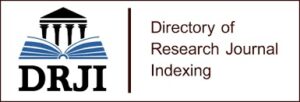The Art Of Ronggeng Pasaman In The Perspective Of Musical Appropriation
The growth and development of Ronggeng Pasaman was influenced by multicultural interactions between Western music (Portuguese and Dutch) and Eastern music (Arabic, Indian, Malay, Minangkabau, Mandailing and Javanese immigrants). This is related to the issue of identity, migration (diaspora), and forms of musical appropriation. The phenomenon was issued that, the development of Ronggeng in Pasaman culture today were convinced that the art was imported from Javanese immigrants. But musically, the form of Ronngeng Pasaman was different from the form of Ronggeng found in Java . Based on the characteristics of ronggeng, it is observed that, the form of performance art has many similarities to the musical aspects which were not found in the cultural domain of Pasaman, such as, the use of musical instruments, tone systems and the technical use of musical instruments in the West Sumatra Coastal tradition called garitiak and gayo or the ornaments use like rabab pasisie and such a kind of gamat music. The research method used is descriptive analysis and interpretive methods consisting of two aspects (textual and contextual). The final result of this study found that the growth and development of the Ronggeng Pasaman art tradition besides using European violin instruments (Western ) can also be regarded as one of the products of musical appropriation culture between the West (Portuguese and Dutch) and the East ( Arabic, Indian, Malay, Minangkabau, Mandailing and Javanese immigrants).
Keywords: Ronggeng Pasaman, Perspective, Creativity, Musical Appropriation




















